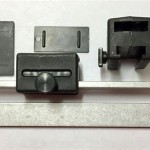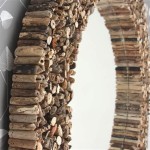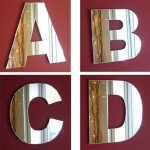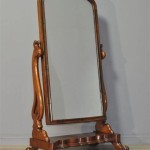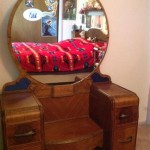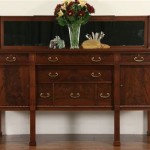Black and White Mirror Photography
Black and white mirror photography offers a unique and compelling approach to capturing reflections. By stripping away color, the focus shifts to form, texture, light, and shadow, creating images with a distinct mood and aesthetic. This technique encourages viewers to interpret the interplay between subject and reflection in a more abstract and evocative way.
Several factors contribute to the power of black and white in mirror photography. The absence of color simplifies the composition, allowing the viewer to appreciate the graphical elements of the scene. Strong contrasts between light and dark areas, amplified in monochrome, add drama and depth. The inherent symmetry often present in reflections is further emphasized, creating a sense of balance and visual harmony.
The choice of subject matter significantly impacts the final image. Portraits captured in mirrors can explore themes of identity, self-reflection, and duality. Reflections of urban landscapes can offer a fresh perspective on familiar surroundings, highlighting architectural details and geometrical patterns. Natural elements, such as trees and water bodies reflected in mirrors, can evoke feelings of tranquility and serenity, emphasizing the interplay of nature and artifice.
Effective use of light is crucial in black and white mirror photography. Side lighting can create intriguing shadows and highlights, adding depth and dimension to the reflection. Backlighting can produce silhouettes and dramatic contrasts, while front lighting emphasizes details and textures. Experimenting with different lighting conditions can yield dramatically different results, allowing photographers to control the mood and atmosphere of their images.
Compositional considerations play a vital role in successful mirror photography. The placement of the mirror within the frame, the angle of reflection, and the relationship between the subject and its reflection all influence the visual narrative. Leading lines, created by the edges of the mirror or reflected objects, can draw the viewer's eye through the image. The rule of thirds can be employed to create a balanced and visually appealing composition, even within the constraints of a reflected scene.
The type of mirror used also influences the final image. Plane mirrors create perfect, symmetrical reflections, while convex mirrors distort the reflection, offering a wider field of view and a more abstract representation. Concave mirrors magnify the reflection, creating interesting visual effects. The size and shape of the mirror itself can become an element of the composition, adding another layer of visual interest.
Post-processing techniques can further enhance black and white mirror photographs. Adjusting contrast can emphasize the interplay of light and shadow, while manipulating tonal values can create different moods. Cropping can refine the composition, focusing attention on specific elements within the reflection. Sharpening can enhance details and textures, while noise reduction can create a smoother, cleaner image. However, it's important to avoid over-processing, which can detract from the natural beauty of the image.
Exploring different locations and environments can expand the creative possibilities of black and white mirror photography. Urban settings offer a wealth of reflective surfaces, from shop windows to skyscrapers. Natural environments provide opportunities to capture reflections in still water or on wet surfaces. Even everyday objects, such as puddles or metallic surfaces, can be used to create compelling mirror images. The key is to be observant and to experiment with different perspectives and angles.
The use of mirrors in photography offers a unique opportunity to manipulate perspective and create surreal and thought-provoking images. The absence of color in black and white mirror photography further enhances this effect, allowing viewers to focus on the interplay of form, light, and shadow. By carefully considering the elements of composition, lighting, and subject matter, photographers can create powerful and evocative images that explore themes of reflection, duality, and perception.
Technical considerations, such as shutter speed and aperture, are also important in black and white mirror photography. A faster shutter speed may be required to freeze movement, especially when capturing reflections in moving water or with moving subjects. Aperture control influences depth of field, affecting how much of the scene, both in front of and behind the mirror, is in focus. A wider aperture (smaller f-number) can create a shallow depth of field, isolating the reflection from the background, while a narrower aperture (larger f-number) can keep both the reflection and the surrounding environment in sharp focus.
Experimentation is essential to mastering black and white mirror photography. By exploring various techniques, subjects, and environments, photographers can develop a unique style and vision. The combination of technical skill and artistic sensibility allows for the creation of captivating and meaningful images that transcend the literal representation of a reflection and delve into the realms of abstraction and interpretation.

Things That Quicken The Heart Black Mirrors White Mirror Painting And

Mirrors Mirror Photography Reflection Surrealism

Reflection Of Time A Tarnished Old Mirror Lafayette Louisiana Black And White Photograph Keith Dotson Photography

Photographer And Mirror Black White Photograph Photo Zen Photography

Photographer In The Mirror Woman Taking Self Portrait One Other Girl Holding Black And White Abstract Concept Stock Photo Adobe

Mirror Resting On A Tree With Reflection Of Woman S Face In Black And White Stock Photo Offset

Batufolidiparole Mirror Photography Reflection Self Portrait

Grayscale Photography Of A Mirror With Person S Reflection Free Stock Photo

Old Self Portrait Black And White Reflecting Myself In A Mirror By Maria Paolini Photo Stock Studionow

500 Mirror Reflection Pictures Hd Free Images On Unsplash

